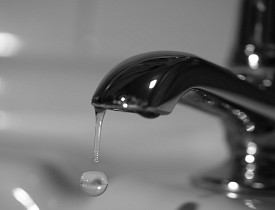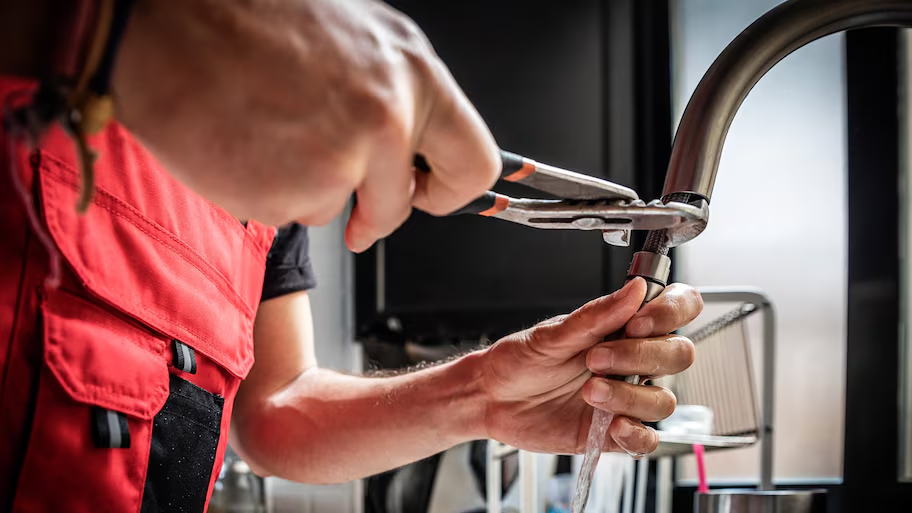How It's Essential to Rectify a Broken Faucet
How It's Essential to Rectify a Broken Faucet
Blog Article
We have come across the article on Should I Repair or Replace a Leaky Faucet? directly below on the net and figured it made good sense to write about it with you over here.

Dripping taps might appear like a small aggravation, however their influence exceeds just the nuisance of the sound. From drainage to incurring unnecessary monetary expenses and wellness threats, ignoring a dripping tap can lead to various repercussions. In this article, we'll explore why it's critical to address this usual home concern without delay and effectively.
Wastefulness of Water
Ecological Effect
Leaking taps add substantially to water wastefulness. According to the Epa (EPA), a solitary tap dripping at one drip per secondly can lose greater than 3,000 gallons of water annually. This not just pressures water sources but also influences environments and wildlife depending on them.
Step-by-Step Overview to Fixing a Dripping Tap
Tools Required
Before trying to fix a trickling faucet, collect the needed tools, consisting of an adjustable wrench, screwdrivers, substitute parts (such as washing machines or cartridges), and plumber's tape.
Usual Faucet Issues and Their Solutions
Recognize the kind of tap and the particular concern triggering the drip. Usual issues consist of worn-out washing machines, corroded shutoff seats, or defective O-rings. Describe maker instructions or on the internet tutorials for step-by-step support on repairs.
Financial Expenses
Increased Water Expenses
Past the environmental influence, dripping faucets can blow up water bills considerably. The built up wastefulness in time equates right into higher energy expenditures, which could have been prevented with prompt repairs.
Prospective Residential Or Commercial Property Damage
In addition, extended trickling can lead to damage to components and surface areas surrounding the faucet. Water build-up can create discoloration, corrosion, and even structural concerns if left neglected, resulting in added repair costs.
Health and wellness Worries
Mold And Mildew and Mold Growth
The constant existence of wetness from a trickling tap develops an ideal environment for mold and mold growth. These fungi not only compromise indoor air high quality however additionally posture health risks, particularly for people with respiratory conditions or allergies.
Waterborne Illness
Stationary water in trickling taps can come to be a breeding place for microorganisms and various other virus, increasing the risk of waterborne diseases. Contaminants such as Legionella bacteria grow in stationary water, possibly leading to serious illnesses when ingested or breathed in.
Do it yourself vs. Specialist Fixing
Benefits and drawbacks of Do It Yourself Fixing
While some might attempt to repair a dripping faucet themselves, do it yourself repairs feature their very own collection of difficulties. Without proper knowledge and devices, do it yourself attempts can intensify the issue or bring about insufficient repair work, prolonging the trouble.
Advantages of Working With a Specialist Plumber
Employing a professional plumber ensures that the underlying source of the leaking faucet is resolved successfully. Plumbing technicians possess the expertise and tools to identify and repair tap problems efficiently, conserving time and reducing the risk of more damages.
Ecological Responsibility
Individual Contribution to Preservation
Taking duty for dealing with leaking faucets aligns with broader initiatives towards water conservation and ecological sustainability. Every individual's activities collectively make a considerable impact on maintaining precious sources.
Sustainable Living Practices
By focusing on prompt fixings and adopting water-saving behaviors, individuals add to sustainable living techniques that benefit both existing and future generations.
Preventive Measures
Normal Maintenance Tips
To avoid dripping faucets, execute routine upkeep such as cleansing aerators, checking for leakages, and replacing damaged components quickly. In addition, consider setting up water-saving tools or upgrading to a lot more reliable fixtures.
Value of Prompt Repairs
Attending to trickling faucets as soon as they're observed protects against further water waste and potential damage, eventually conserving both water and cash in the long run.
Effect On Residential Or Commercial Property Worth
Assumption of Well-Maintained Residential Or Commercial Property
Preserving a property in good condition, including dealing with maintenance problems like leaking faucets, enhances its viewed value and value amongst possible customers or lessees.
Impact on Resale Worth
Characteristics with well-kept plumbing fixtures, including faucets, command higher resale values in the realty market. Attending to trickling taps can add to a favorable perception during residential property assessments and settlements.
Final thought
Attending to a leaking faucet goes beyond mere convenience; it's an important step toward conserving water, lowering economic prices, and securing health and wellness and home. Whether with DIY fixings or specialist help, acting to repair dripping taps is a tiny yet impactful method to promote responsible stewardship of sources and add to a healthier, extra lasting future.
Why Are My Faucets Dripping (And Can I Fix it Myself)?
Causes of a Dripping or Leaking Faucet
Whether you’re hearing drops of water falling and hitting a sink, or noticing water ooze out from the base of the spout, you shouldn’t ignore a dripping or leaking faucet. And, the good news is, sometimes you can fix the problem yourself.
In this article, we’ll review a few common causes of dripping and leaky. We’ll also walk you through some basic ways to find the problem and handle it without calling anyone — and let you know when to call in a pro.
But, no matter what the cause, or whether you can handle it on your own, the sooner you address it, the better.
Each drip may be a tiny amount of water. But, they all add up quickly. According to the U.S. Geological Survey, one faucet losing one drop every 20 seconds — five a minute — wastes around a liter of water every day, and 173 gallons a year.
Add in more than one in your house, and it’s a lot of water to waste. So, we’ll help you get to the bottom of things quickly.
Four Reasons Your Faucet May Be Dripping
Aerator is Damaged or Unseated Valve Seat is Corroded O Ring is Loose or Worn Out Part of the Assembly is Loose Aerator is Damaged or Unseated
If you unscrew the end of your faucet, you’ll find the aerator. It’s the little stem piece with a screen on it that shuts off the water circulation.
If it’s damaged, or if it’s not sitting right, it will allow water to pass through.
Valve Seat is Corroded
Next is the valve seat, which is connected to the washer. If the washer wasn’t in place correctly, then it could have ground against the seat. Over time, this damages the valve seat.
The problem could also be corrosion: Over time, the part has worn out, and it’s now allowing water to pass through.
O Ring is Loose or Worn Out
Since the o ring is only a small rubber gasket, it’s a common reason why the faucet is dripping. You’ll find it at the base of the faucet, and it’s there to keep water from coming out where it’s not supposed to.
However, it’s common for the o ring to wear out over time. When it does, you’ll notice a drip.
Part of the Assembly is Loose
So far, we’ve looked at a few small, specific parts. But, the problem could be anywhere in the assembly if something’s out of place.
Even if a part isn’t damaged, over time, it may have become loose or dislodged. It could be the parts we mentioned, or the aerator at the tip of the faucet, the stem itself,
Can I Fix a Leaky Faucet Myself?
Depending on the problem, and how handy you are, there’s a chance you can fix a leaky faucet without calling a professional. But, you do run the risk of making the problem worse.
If it’s a small drip, you can certainly try a few troubleshooting tactics. We’ll walk you through them in a moment.
But, no matter what, your first step should be shutting off the water coming into the faucet. You should find a shutoff valve under the sink on the pipes leading to it. Turn each one clockwise until they close tightly.
Next, make sure you have the right tools for whatever you’re attempting. It’s tempting to make do with what you have. But, you need the right ones for a reason: You’re often dealing with small parts that can break if you handle them carelessly.
If you’re feeling confident, here are some places to start.
Items Near the Tip of the Faucet
A few of the parts we mentioned — particularly the valve seat and washer — are located at the tip of the faucet where the water comes out. They’re easy to access, making it a good place to start.
Check the O Ring
To check the o ring, you’ll need to take off the spout at the base. It’s easiest on kitchen sinks with long spouts, versus the smaller, bulkier base on most bathroom sinks.
Either way, this can be tricky, so do it carefully and don’t force anything. If it’s not coming right off, you’re much better off calling in a pro than possibly breaking something.
For a kitchen sink, there’s usually a nut or coupling assembly at the base of the spout. These often slide off easily without using any tools.
Once you’ve disassembled those parts, gently but forcefully twist off the spout.
Then, you can see the o rings. There should be two of the rubber gaskets on the base. If they look worn or damaged, replace them, and see if that solves the problem.

We hope you enjoyed reading our post about Water Dripping from Faucet: Why and How to Fix. Many thanks for finding the time to browse our article. Those who appreciated our blog post please be sure to pass it around. Thanks for being here. Come back soon.
Report this page